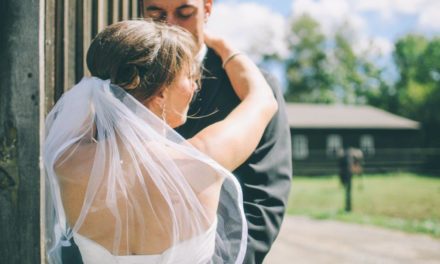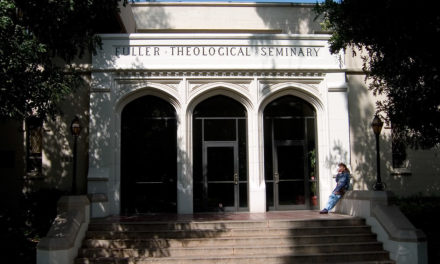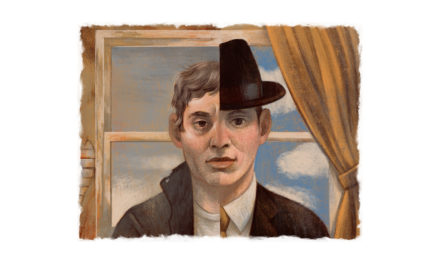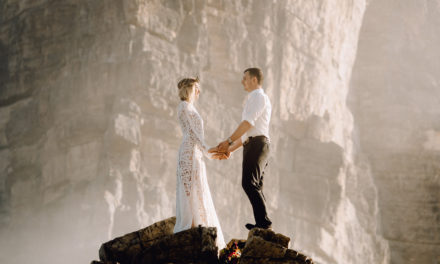Sunday evening, HBO aired the beginning of an interesting three-part documentary entitled “Nuclear Family.” No, it is not a careful examination of the natural-married-mother/father-raising-their-own-children family form. Neither is it an attack on that ideal either. It is actually a very curious and unexpected defense of why the married mother/father family will not, and cannot, be so easily displaced. The title is a curious play on the word “nuclear.”
The three-hour documentary film – the remaining two episodes airing the evenings of Oct 3 and 10 on HBO – was created by director Ry Russo-Young. The New York Times describes Russo-Young as “born in 1981, in the first generation of children raised by openly gay and lesbian parents.” She was raised in avant garde 1980s Greenwich Village and The New York Times Magazine profiled Russo-Young as a 22-year-old filmmaker in a 2004 cover story entitled “Growing Up With Mom and Mom.”
She loves her two “moms.” But the story she tells of her family and its development is not a simple, nor necessarily, a happy one. It is story of profound human struggle. So why would HBO feature a documentary that demonstrates some deep, inherent problems in the design of same-sex families? Variety admits “public acceptance of gay and lesbian families has reached a point where Russo-Young can relax the party line somewhat.” And relax the party line she does.
Russo-Young recently told Vogue, in an interview on the release of her film, “I have always wanted to tell the story. I just wanted to tell the version of it that felt the most truthful to me, and that took a really long time to figure out.” It wasn’t until she had her own two boys with her husband that her own story started to make sense. She adds, “I could come to a sense of peace in terms of my feelings towards my biological father, and have a sense of closure on something that was really unresolved for most of my life.”
Ry’s sister Cade makes a seemingly throw-away comment in the first episode of the film that “biology isn’t the end all and be all of life.” But the rest of the documentary makes the very case that it is a much larger deal than advocates of same-sex families want to admit. And this is really the guts of the film.
We have been told over and again by family revolutionaries that “love makes a family” and “the families we choose to create are best.” It would be nice if life were that simple and malleable. But Russo-Young’s story is all about how strong biological connections actually are. And naggingly so.
She says she was loved deeply by her two “moms.” In fact, she says, “If anything, I was loved too much.” It is a profoundly pregnant line in the film. That is because the man who provided his sperm for her creation was told by the two moms that his “fatherhood” would be a strict “no rights-no responsibility” service on his part. His sample was really all they needed or wanted from him. In fact, they chose him, in part, because he lived in San Francisco, literally a continent away. Out of sight, out of mind.
But when Russo-Young was young, she naturally started asking about her father, because she knew everyone has a father. Who was hers? The two moms showed her a picture of the man who was responsible for her existence hoping this would satisfy her curiosity. Of course, seeing the man whose progeny she was only provoked her wonder. Before long, Russo-Young’s father (Tom) started visiting her, her sister Cade by another sperm donor, and the two women. Those visits turned into extended vacations together, all under the same roof. Soon the father’s heart began to meld powerfully with his daughter. “It was clear Tom fell in love with you” confesses one of the women to Russo-Young.
This became a major problem for the “mothers” since Tom was never intended to be a significant part of the picture. He was just supposed to be a donor and walk away. One of the women, the birth mother, explains in the trailer, “It just felt like he was forgetting our promises to each other and what this was all about.” The promise that this family would consist of two mothers and two mothers only. The other mother objects into the camera, “Where did he come off interfering with our family?”
That interference was Tom suing to be recognized as the legal father of the filmmaker. Robin, her birth mother, explains the problems started when Russo-Young as a toddler became “intertwined with (Tom’s) sense of who he really was.” Essentially, biology got in the way of the women’s dream family.
In a dramatic moment in the film’s trailer, Robin asserts to Ry during an interview, “He just wasn’t your family.” To which Ry tearfully retorts, “Clearly he was some kind of big deal in my life ‘cause here we are, 30 years later, talking about it.”
Sandy Russo, the other “mother,” angrily objects, explaining his inclusion “wouldn’t be the family we wanted, we planned, we struggled for.” “We” meaning the two adult women. In the way the trailer and first episode are constructed, their daughter’s connection with her father doesn’t even seem to be a consideration for these two women. That realization is haunting for the viewer.
The documentary is the story of how this new fangled family form was supposed to be one thing and ended up being something very different. It went nuclear. And all because of that nagging thing called biology.
No doubt, this film is merely the start of many such adult children telling their poignant and emotional story of the downsides of being lovingly raised in same-sex homes.
Additional Resources:
Them Before Us: Why We Need a Global Children’s Rights Movement by Katy Faust and Stacy Manning is a very important book that tells the very stories that the documentary Nuclear Family is telling.
Them Before Us is also an international organization focused on putting the needs of children before the desires of adults in family formation, focusing on the problems of divorce, donor insemination, and same-sex families. They have collected many stories of children from such homes.
Photo from Shutterstock.






